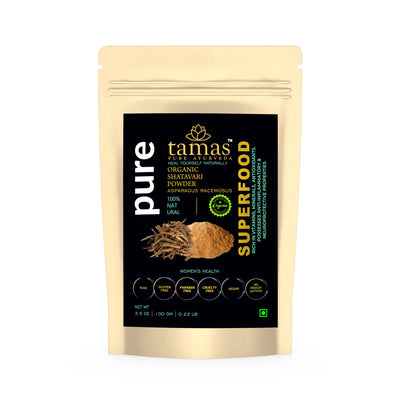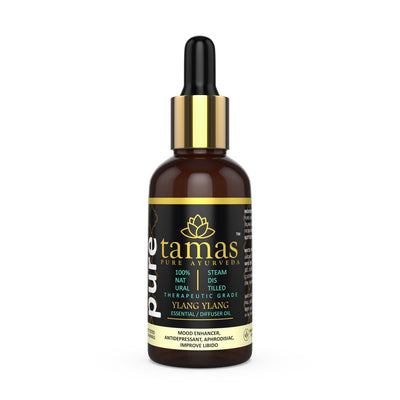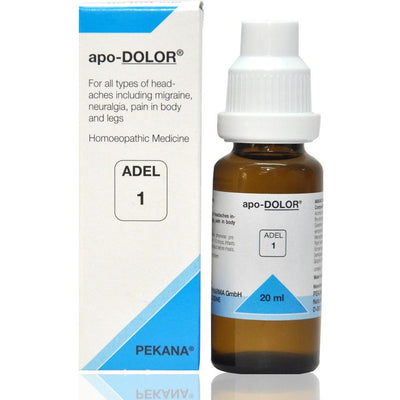
Eladi Thailam
Why use Kerala Ayurveda's Eladi Thailam?
Eladi Thailam is sesame oil-based Ayurvedic medicine for acne and is also known to be beneficial in the treatment of other skin conditions including boils, leukoderma, and other acute and chronic skin issues. The key benefits of Kerala Ayurveda's Eladi Thailam are:
- It is a unique herbal concoction and contains 100% natural oil for acne prevention
- It is helpful in the treatment of pigmentation and acne
- Eladi Thailam aids in detoxifying the skin and helps to flush out excess water
- The oil helps provide the skin with an instant radiance and glow
- It is prescribed as one of the safest oils to use for regular massages, even for infants
- It is an Ayurvedic treatment for acne and as well as an Ayurvedic oil for skin glow
What are the main ingredients in Kerala Ayurveda's Eladi Thailam?
- Sesame Seeds
- Kapur
- Aromatic ginger
- Cinnamon
- Cardamom
- Himalayan Cedar
Acne - An Overview
Acne is a chronic, inflammatory skin condition that causes spots and pimples, especially on the face, shoulders, back, neck, chest, and upper arms. Acne most commonly occurs when the hair follicles become clogged with oil and dead skin cells, causing whiteheads, blackheads or pimples, and is most common among teenagers, though it affects people of all ages.
The signs and symptoms of acne vary depending on the severity of the skin condition. The most common symptoms include:
- Whiteheads (closed clogged pores)
- Blackheads (open clogged pores)
- Small red, tender bumps (papules)
- Pimples (pustules), which are papules with pus at their tips
- Large, solid, painful lumps beneath the surface of the skin (nodules)
- Painful, pus-filled lumps beneath the surface of the skin (cystic lesions)
Causes of Acne
Acne is primarily a hormonal condition driven by male or ‘androgenic’ hormones, which typically become active during the teenage years. Sensitivity to such hormones, combined with bacteria on the skin, and fatty acids within oil glands, cause acne. Common sites for acne are the face, chest, shoulders, and back, which are the primary sites of oil glands. The causes of acne can be classified into four main causes:
- Excess oil production
- Hair follicles clogged by oil and dead skin cells
- Bacteria
- Excess activity of a type of hormone (androgens)
Acne occurs when the pores of the skin become blocked with oil, dead skin, or bacteria. Each pore of the skin is the opening to a follicle and each follicle is made up of hair and a sebaceous (oil) gland. The oil gland releases sebum (oil), which travels up the hair, out of the pore, and onto the skin. The sebum keeps the skin lubricated and soft. One or more problems in this lubrication process can cause acne. It can occur when:
- Too much oil is produced by the follicles
- Dead skin cells accumulate in the pores
- Bacteria build up in your pores
There are certain factors that may trigger or aggravate acne, they are:
Hormones
Androgens are hormones that increase in boys and girls during puberty and cause the sebaceous glands to enlarge and make more sebum. Hormonal changes related to pregnancy and the use of oral contraceptives can also affect sebum production. Additionally, low amounts of androgens circulate in the blood of women and can worsen acne.
Certain medications
There are certain medications that can worsen acne, some of which include drugs containing corticosteroids, testosterone or lithium.
Diet
Certain dietary factors, including skim milk and carbohydrate-rich foods such as bread, bagels, and chips may worsen acne. Chocolate and high sugar food products have also long been suspected of making acne worse.
Stress
In this modern age of high paced life, stress is an everyday occurrence and it can make acne worse.
An Ayurvedic Perspective to Acne
Ayurveda can be defined as 'the science of life or knowledge of life.' It is an ancient system of living, closely connected to yoga and is said to have originated in India more than 5000 years ago. According to Ayurveda, everything in existence is made up of five elements: Fire, Water, Earth, Air, and Space. These elements partner together to form ‘doshas’ or ‘types’ that influence an individual's physical attributes and mental characteristics. When these elements are paired together, they form ‘Doshas’ or the constitutions that influence an individual's health, wellbeing, habits, personality, and behaviours. There are three doshas: Vata (Air and Space), Pitta (Fire and Earth) and Kapha (Earth and Water).
The difference in the Ayurvedic approach (compared to traditional medical treatments) is in pacifying the internal aggravating factors while simultaneously addressing topical issues. Essentially, Ayurveda is a holistic art and science that utilizes natural herbs, roots, and minerals to promote well-being and balance. As a traditional healing system in India, Ayurveda makes the connection between acne, impaired digestion, and a build-up of toxicity in the body. A core philosophy in Ayurveda is that a healthy inside is necessary for a healthy outside. This is an imperative factor to consider while maintaining healthy skin, but it becomes particularly significant in the management of some of the hard-to-treat skin conditions like rosacea and adult acne.
From an Ayurvedic perspective, illness, disease, and acne are caused by an imbalance of all three doshas, although it is predominantly pitta dosha that is usually to blame for most spots. Ayurveda recognises that we can manage these imbalances and optimise our health with diet and lifestyle changes that promote good digestion, improve elimination, and increase vitality. It can help to try and understand which dosha is the driving force behind acne.
-
Vata Acne: Vata is characterised by dryness. An imbalance in Vata results in poor digestion and the accumulation of toxins.
-
Pitta acne is characterised by redness and excess heat. An imbalance in pitta affects the blood and liver, resulting in inflammation.
-
Kapha acne is concerned with oiliness instead. An imbalance in Kapha means excess sebum is produced and overwhelms the pores so they become clogged.
In Ayurveda, acne is referred to as 'Yauvan Pidika,' and is believed to be a manifestation of an aggravated Pitta dosha which acts under the skin and leads to heated toxins, further breaking out as acne. To maintain healthy, acne-free skin, it is important to adopt a pitta-pacifying diet and avoid spicy and fermented foods. Heavily fried and sour foods should also be avoided.



















